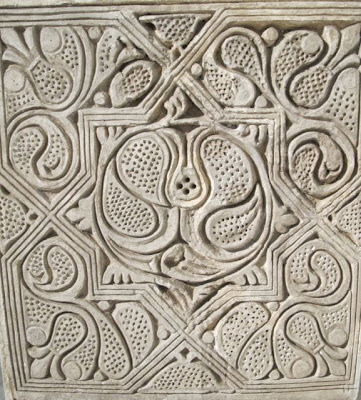Aside from a little bit of sampling in the marshes the night before, we'd mostly had a low-key rest day in our Chibiash office and so it was a bit hard to crank up for the morning event on the Chibaish Corniche, but by the time we got their, the crowds were gathering so we drove over to the boats to do the last paddle into the event.
Again we had some Olympic hopefuls (yet another sculler and kayaker) join us as well as a number of other boats to swell the ranks of our Flotilla.
Our boats with a couple of new additions
We even got the Kalak set up again.
J and Abu H in the Kalak
There were tons of young boys on the waterfront, many waving the Iraqi flag as we came to rest at the base of the speakers platform.
Later they were all over the boats .... there is some magic about kids and boats ... and had to be shooed away. But Rashad and S gave several a ride in the Guffa
Rashad & S and the kids
S helped me get the water quality equipment up on display
S and the Water Quality Equipment originally purchased for the RiverWatch Project in Iraqi Kurdistan but used throughout the Flotilla
There was quite a bit of speechifying (in Arabic of course) and some were quite impassioned about the River, including our own founder, A
A addressing the crowd
This was the final event to our month-long trip down the Tigris from Hasenkeyf in southeast Turkey to Chibaish in southern Iraq. We are already talking about next year (I'm holding out for an Iraqi bellam with a lateen sail) and ways that we can improve the Flotilla (more youth involvement would be a great addition).
I'll be spending a few more days in Chibiash with some of the team but the bulk have left for Baghdad and Sulaimaniyah as it is now the start of the Eid holiday and they want to get back to their families and relax.
I'll be working with some experts to work up the water quality data from the Flotilla and get something published but am also on to the next projects ... fundraising for a Rawanduz Kayak Expedition to promote the threatened rivers of Kurdistan, Iraq, the completion of the book on the Key Biodiversity Areas of Iraq, and of course, looking for gainful employment!
I'll continue to post about these and other follow-up activities and hope you'll follow along.























































